In a fast-paced life, effective time management has become the key to our pursuit of efficient work and life. Whether you are a professional or a student, you are faced with the challenge of time allocation. A reasonable schedule can not only help us clarify our goals, but also improve work efficiency and reduce unnecessary anxiety and stress.
We receive a lot of distractions every day, such as mobile phone messages, chats, meetings, impromptu gatherings, etc. In order to avoid missing important things, making a time plan is a good way to manage time .
The editor has summarized 8 commonly used schedule forms to share with everyone. Each schedule has its own advantages and disadvantages. When making plans, we can choose different schedules according to the characteristics of the matter, or we can use several schedules in combination.
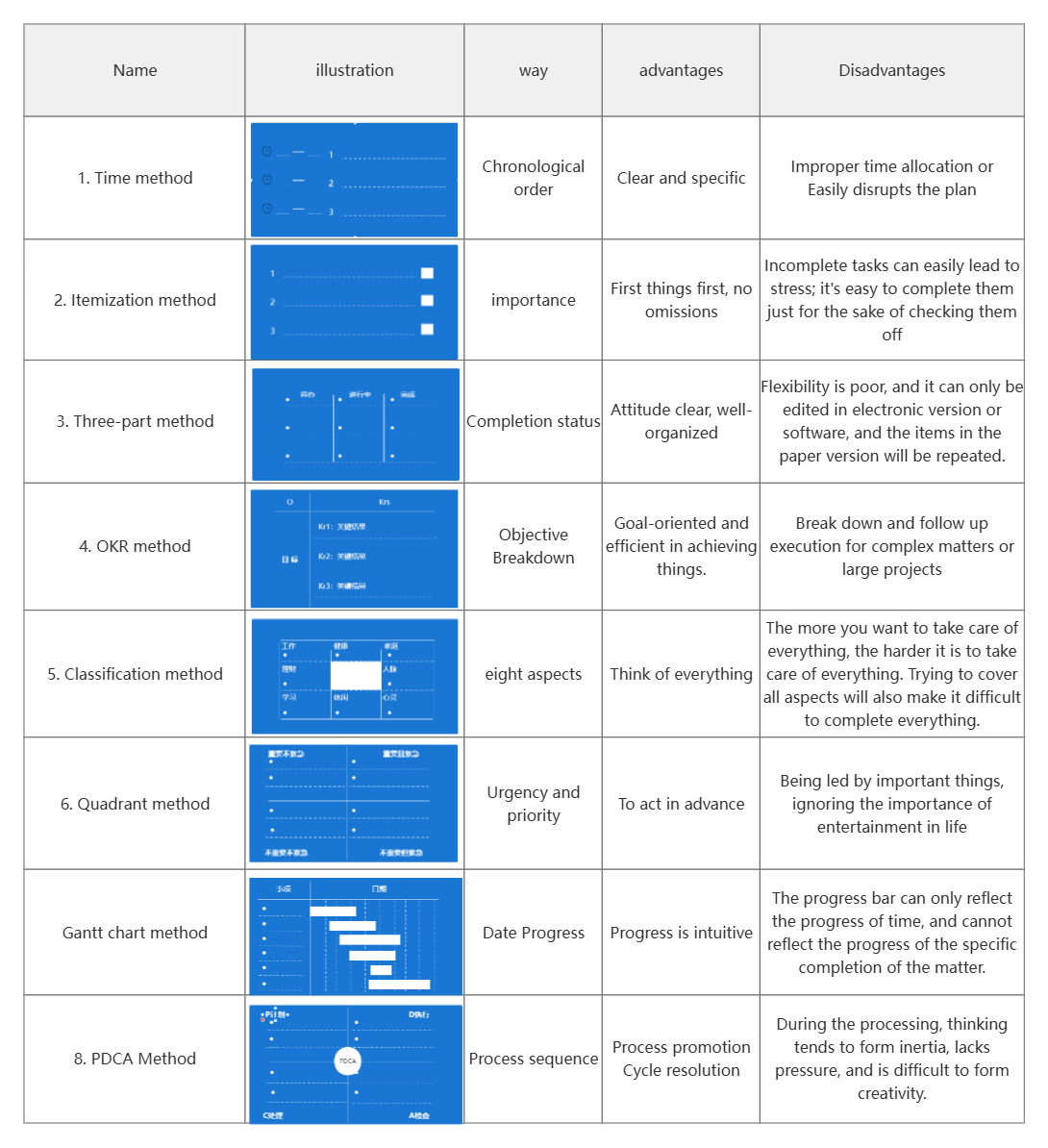
8 common methods for making plans
Regarding planning, there are daily plans, weekly plans, monthly plans and annual plans, etc. Making plans for these time dimensions in advance can free up brain space and not have to think about too many things. It can also help us sort out our thoughts so as not to go off track, and can also serve as material for review management.
The editor has prepared some schedule templates for your reference, which can also be cloned and used directly.
1. Daily Planner
How you spend your day is how you spend your life. Live well today, and you will live well every day. Life is the continuous accumulation of every day, the result of the repetition of this moment, so if you want to live in order, a daily plan is essential.
If your daily tasks are relatively simple and there are not too many time constraints, you can just briefly list the main goals of the day; if there are many things to do and they have clear completion times, you can divide the day into several time periods, such as morning, afternoon, and evening, or split it into specific times and list specific tasks in each time period.
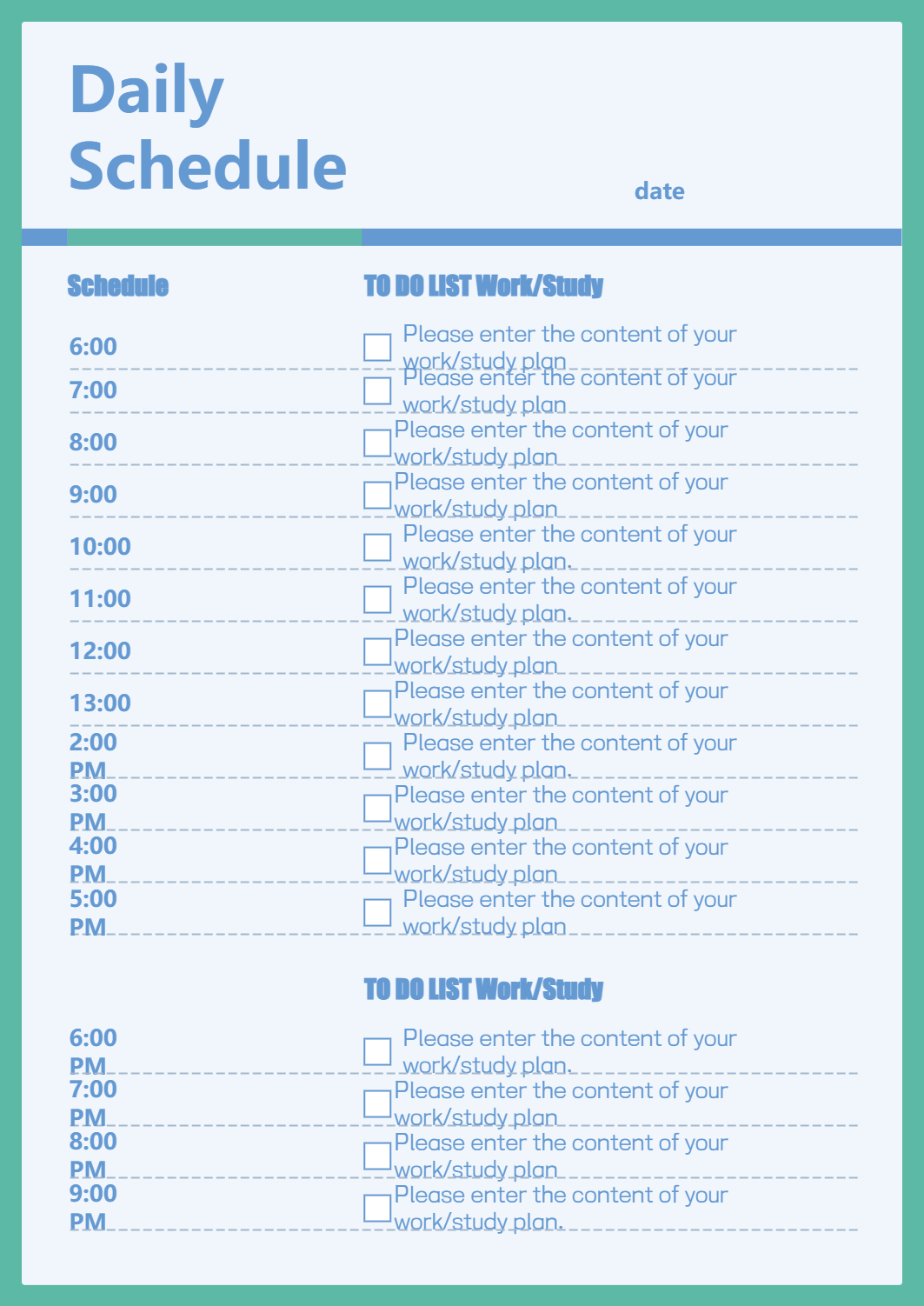
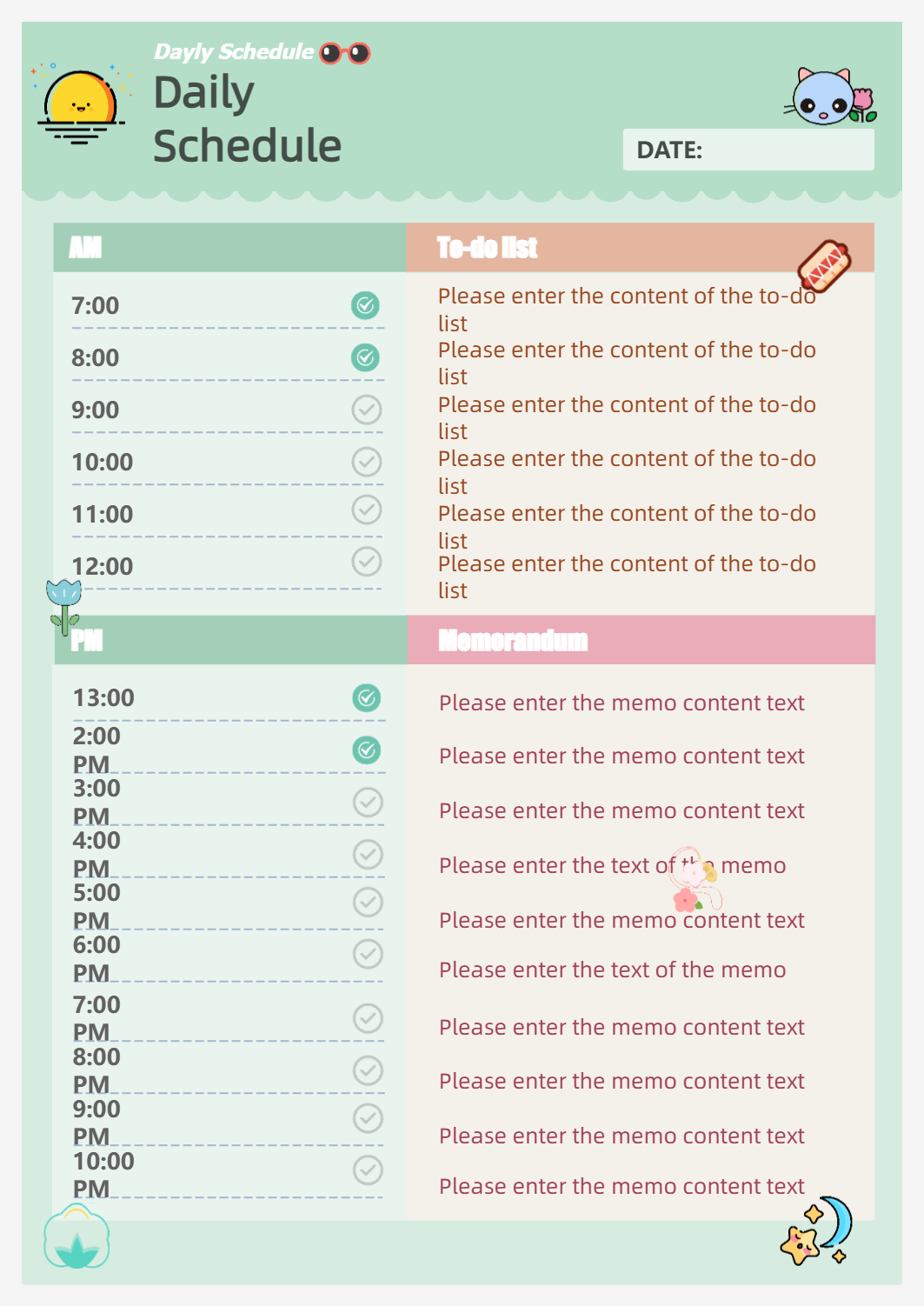
Daily planner template- cartoon style
90% of people repeat 99% of the mistakes, and all their time is wasted. Reviewing is the fundamental solution to not repeating mistakes. Adhere to daily review to understand your progress in achieving your goals and your gains and losses of the day, so that you can avoid detours when you encounter the same difficulties next time.
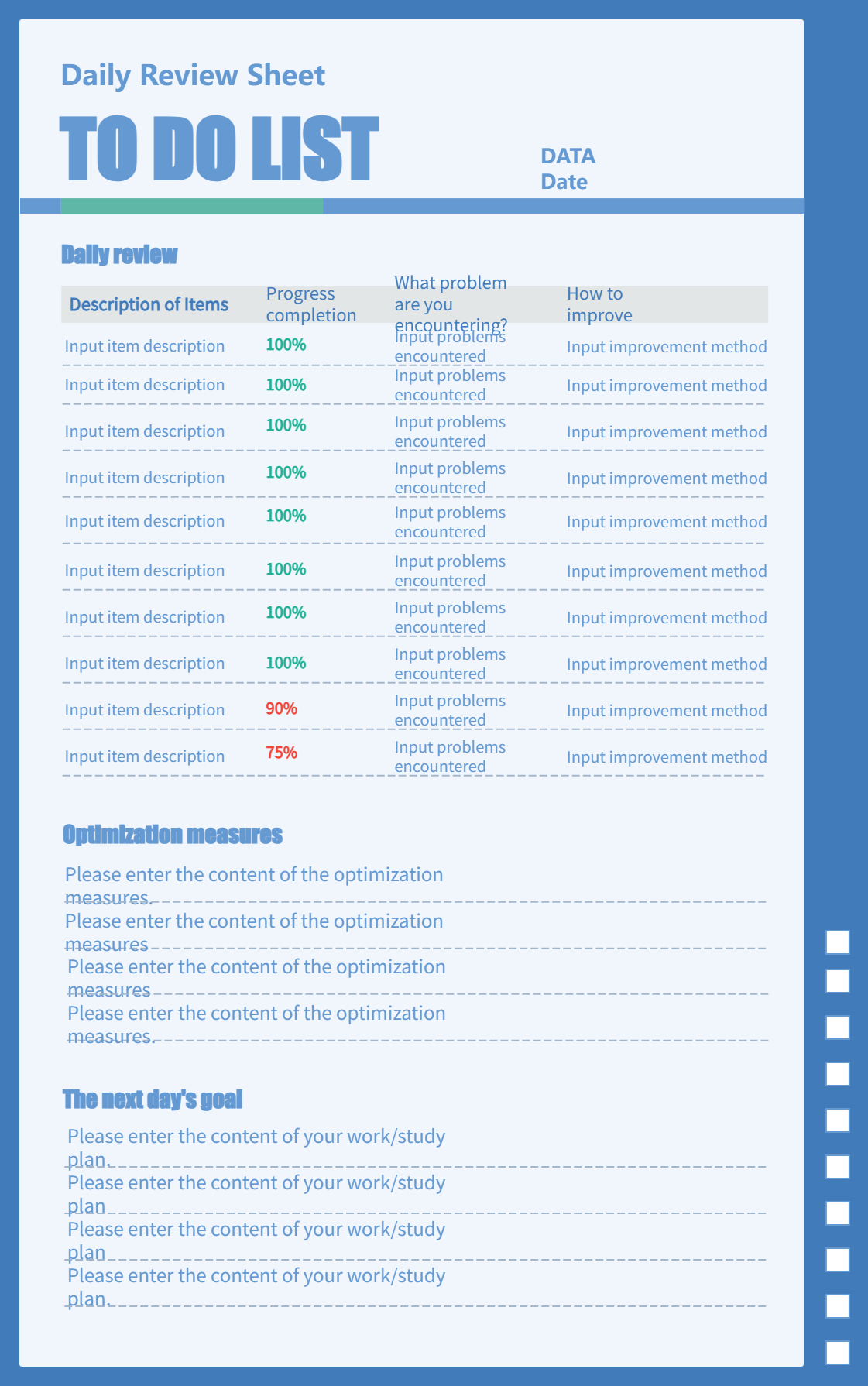
2. Weekly schedule
Compared with daily and monthly plans, daily plans are easily disrupted by temporary events, while monthly plans are longer and difficult to stick to and accurately predict. Therefore, the length of weekly plans is just right and can be adjusted in time, which can best improve efficiency and execution. You can use high, medium, low or 1, 2, 3 to identify the priority of planned tasks, and then estimate the time required to complete the task. When completing each task, record the actual completion time of the task to make adjustments in time management.
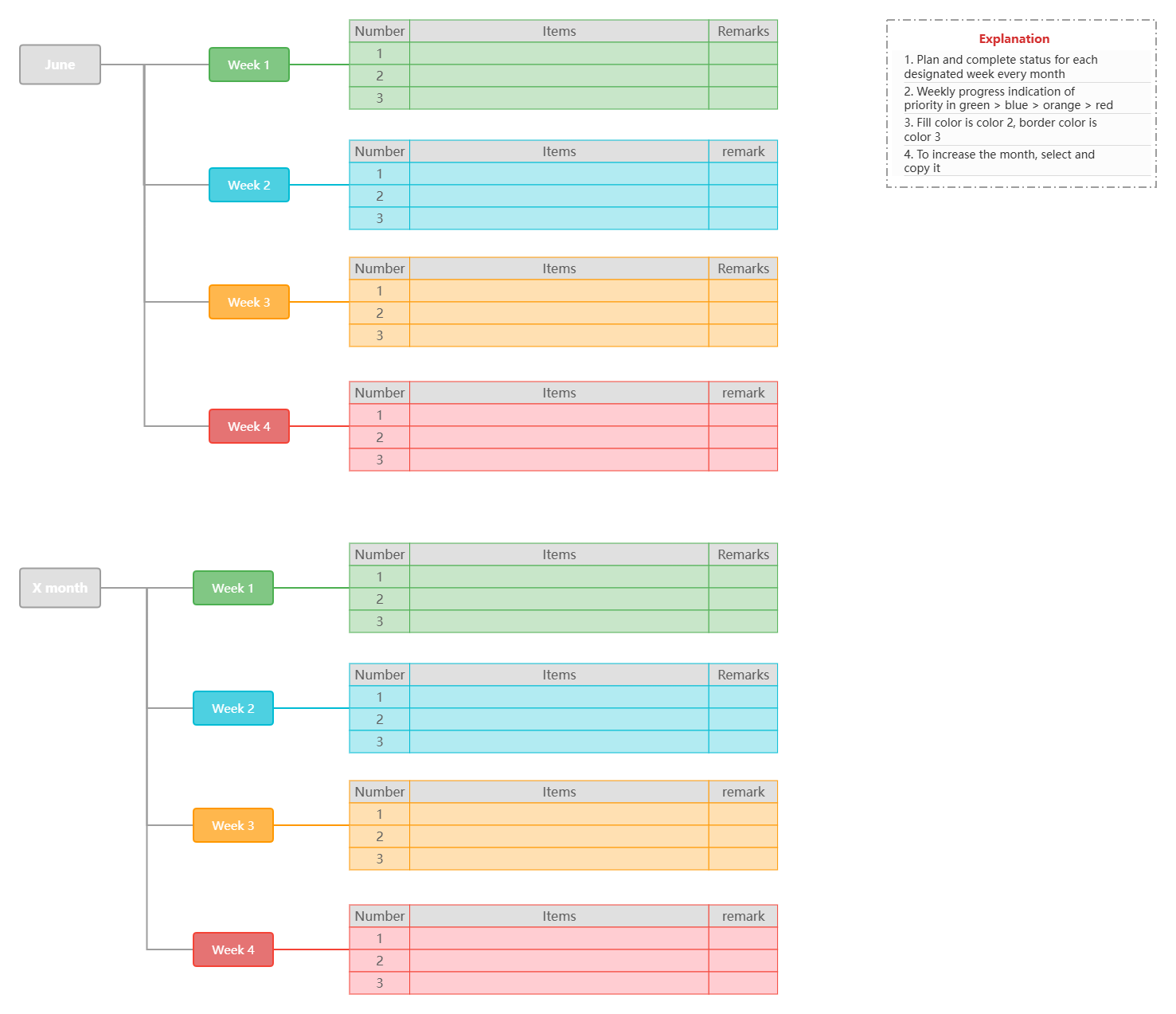
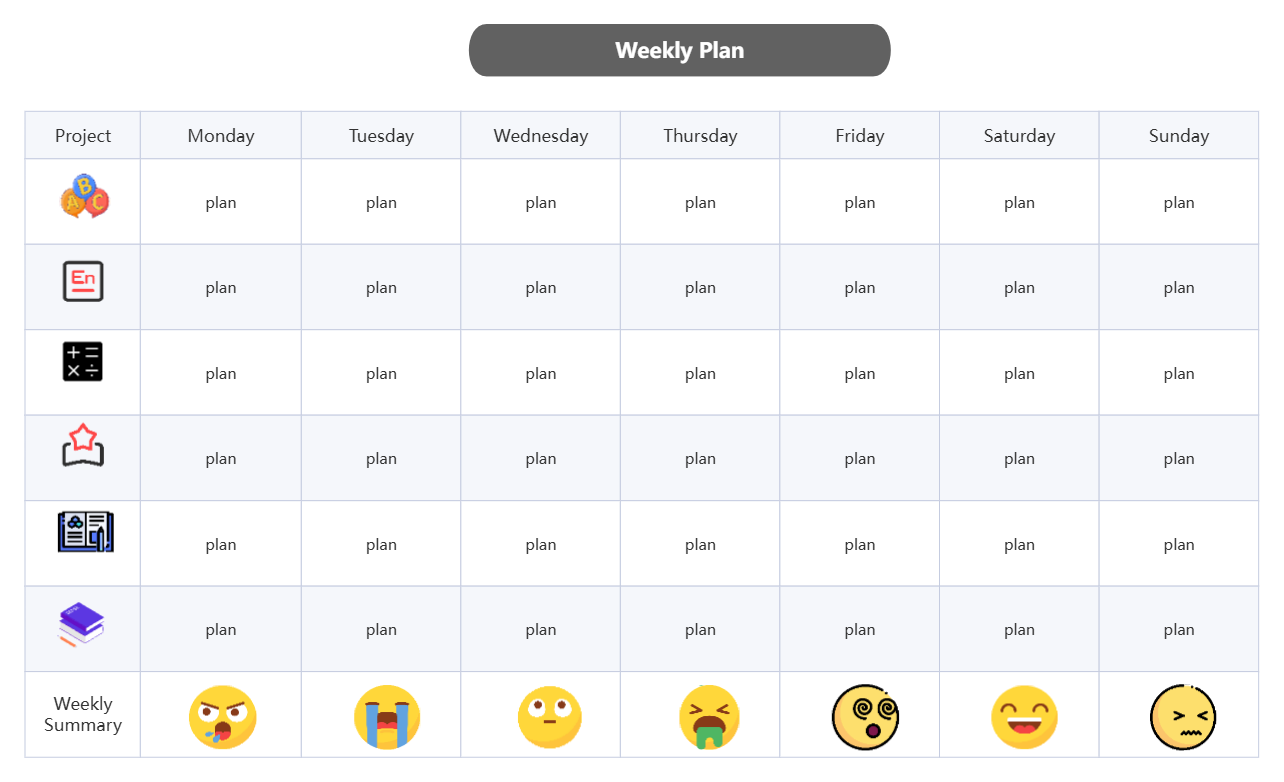
3. 21-Day Planner
In behavioral psychology, people call the phenomenon that it takes at least 21 days for a person to form and consolidate a new habit the 21-day effect. The 21-day plan can help you reshape yourself!
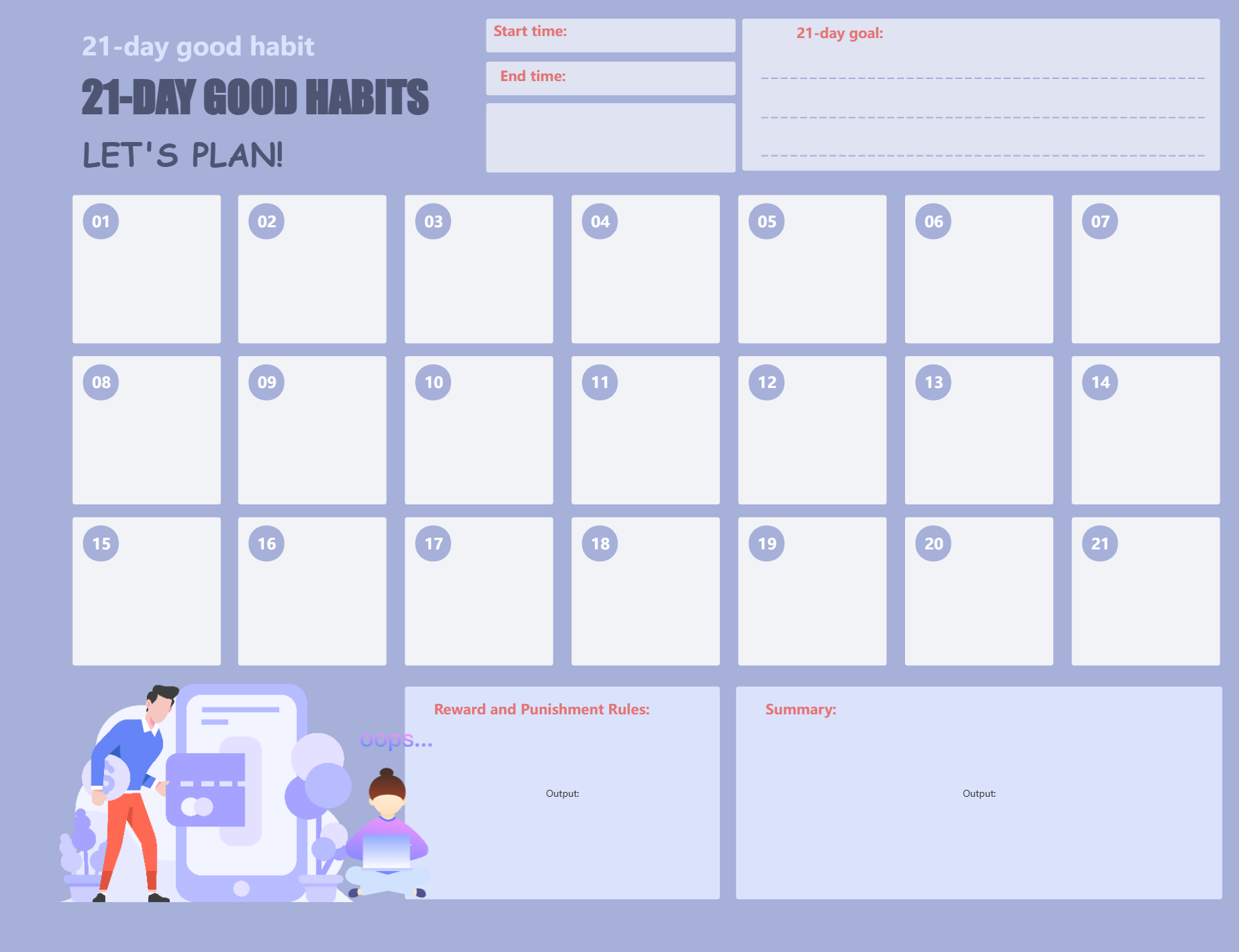
4. Monthly Planner
The monthly plan plays the role of "connecting the past and the future, linking the upper and the lower". There are 12 months in a year, which means you have 12 chances to correct yourself and start over. If you make full plans for each month, you will be close to achieving your annual goal.
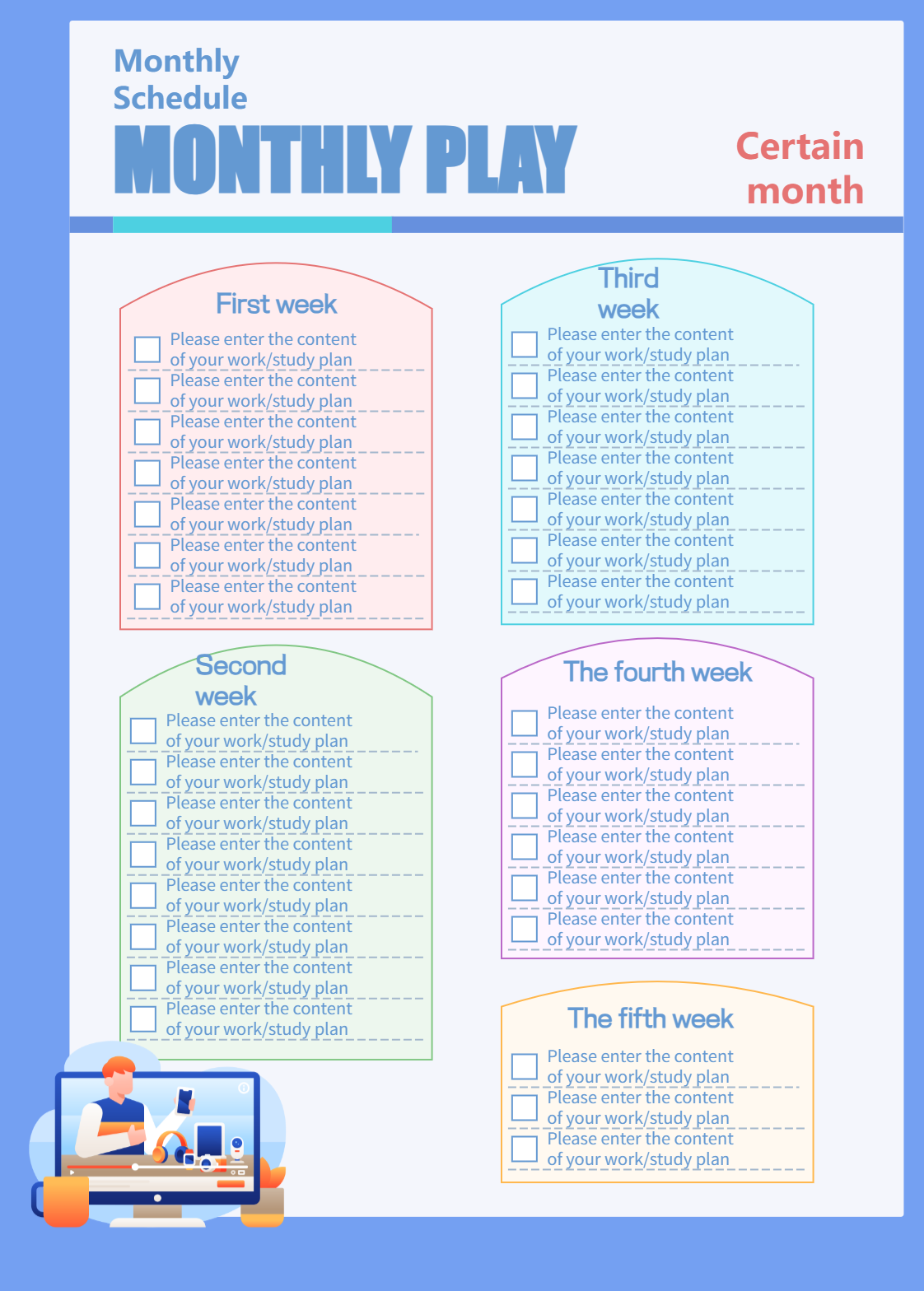
5. Annual plan
the gap between expectations and reality , which comes from a life without a plan. When setting a yearly plan , change the bad habits of last year, embrace the plan, and stick to it, and you will make progress.
You don’t need too many annual plans. An effective plan is one that has clear goals and can be implemented.

Mandala Schedule
The Mandala Planner consists of 81 small grids. Don't be fooled by the appearance, it only takes 3 steps to complete the Mandala Planner.
1) Set big goals as the core;
2) Break down the big goal into sub-goals in each area;
3) Expand outward with specific action plans.
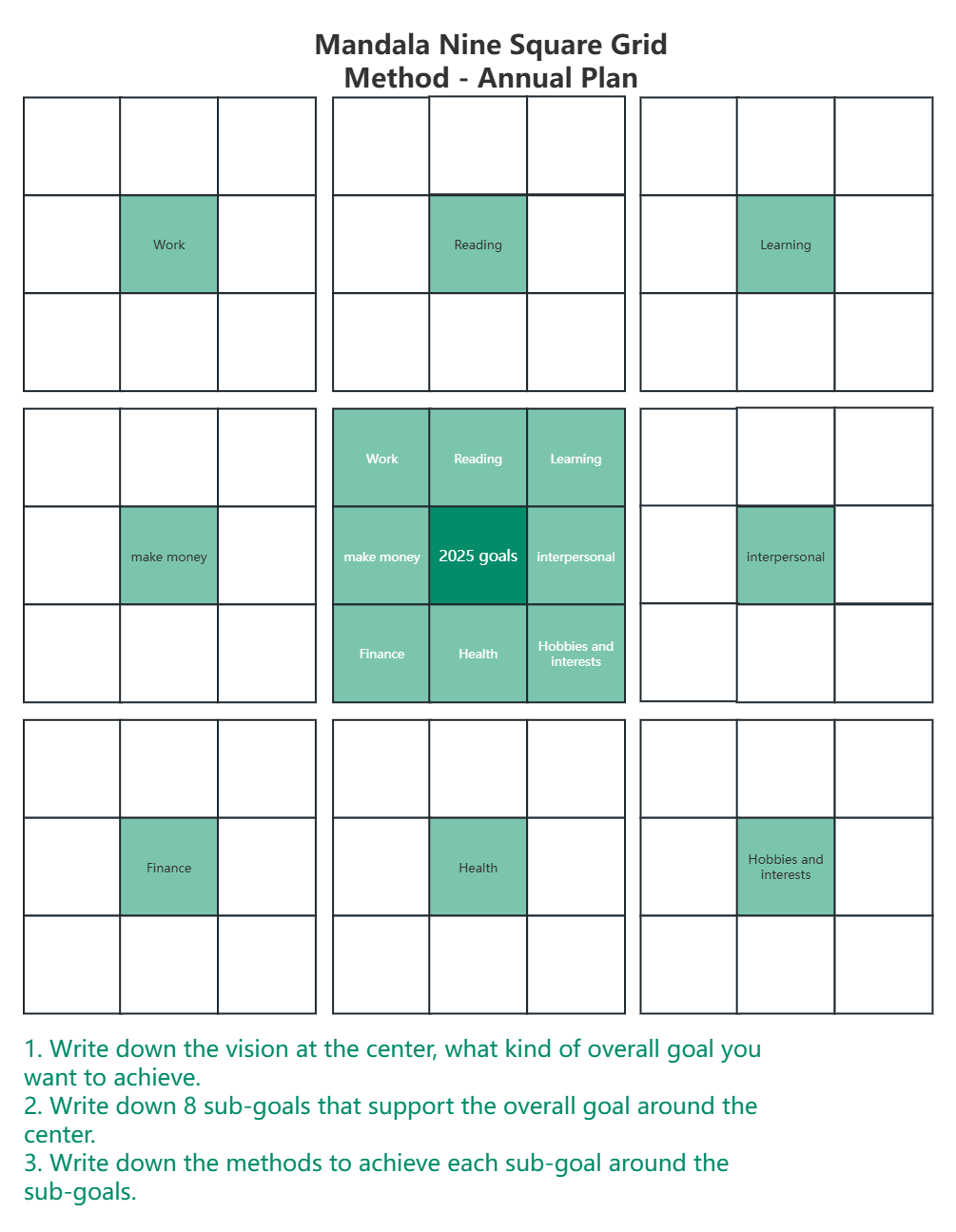
Mandala Nine Square Grid Method - Annual Plan
Today, I mainly shared the templates of daily, weekly, monthly and annual plans. Plans are for you. When you encounter unexpected situations, you must learn to flexibly adjust to ensure the feasibility and effectiveness of the plan. Making a plan is only the first step. The key is to stick to it. Develop the habit of checking the plan every day to ensure that the tasks are completed on time. After the plan is executed, reviewing and summarizing is an essential step. This not only allows us to find deficiencies in the plan, but also allows us to learn lessons and promote personal growth.
The above schedule templates are all from the ProcessOn template community. You can also come to ProcessOn to create your own plan.
ProcessOn supports online editing of flowcharts, mind maps, organizational charts , UML diagrams and other graphics. Users can create new content from scratch, or easily edit and modify existing drawing frameworks and case templates. The operation is simple and easy to use.